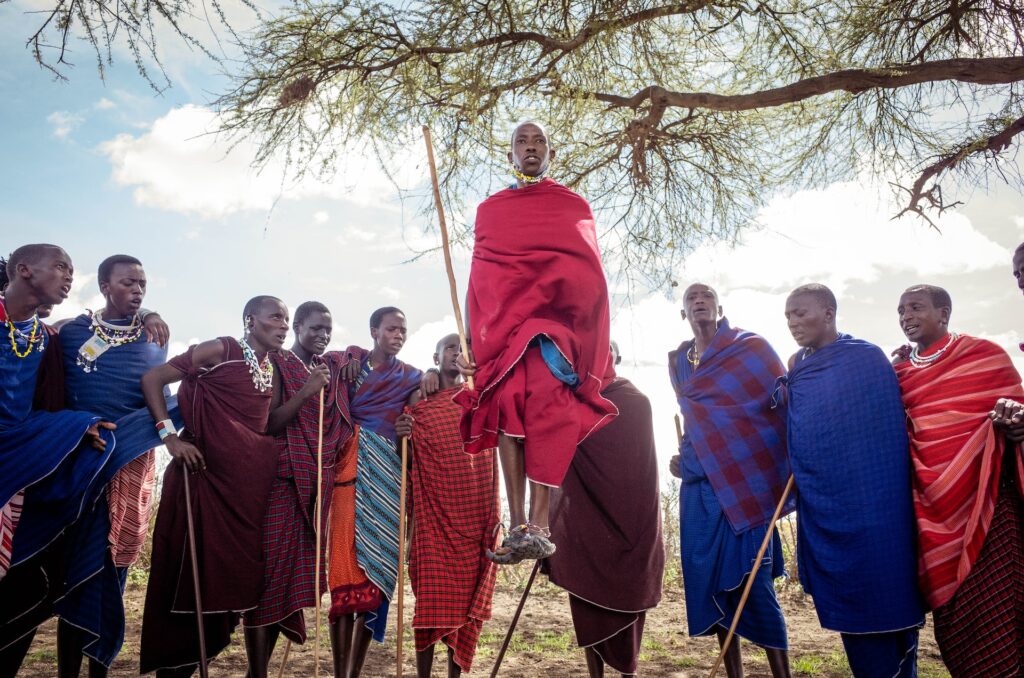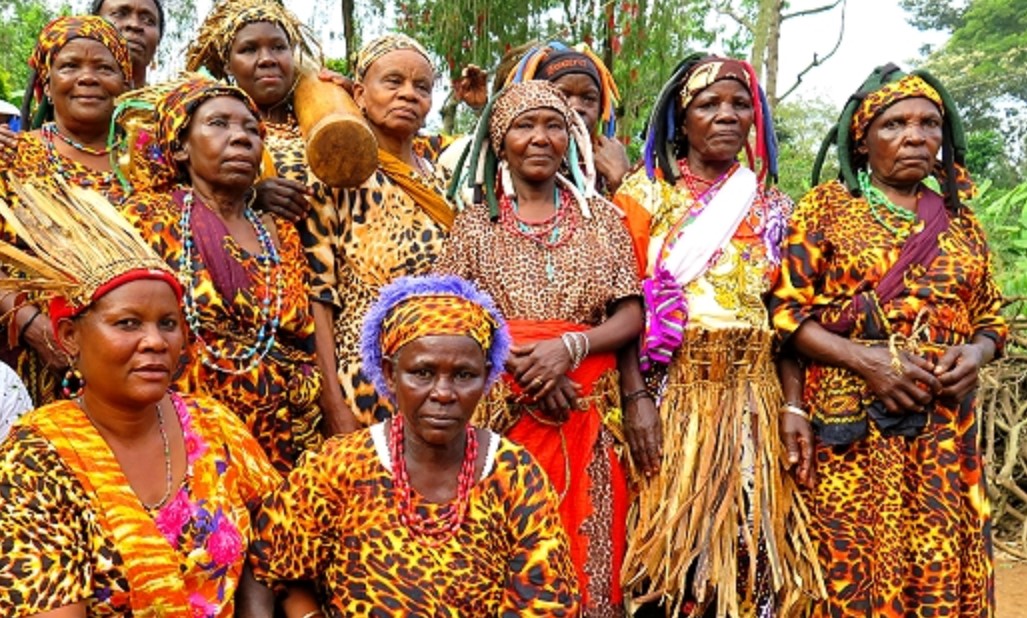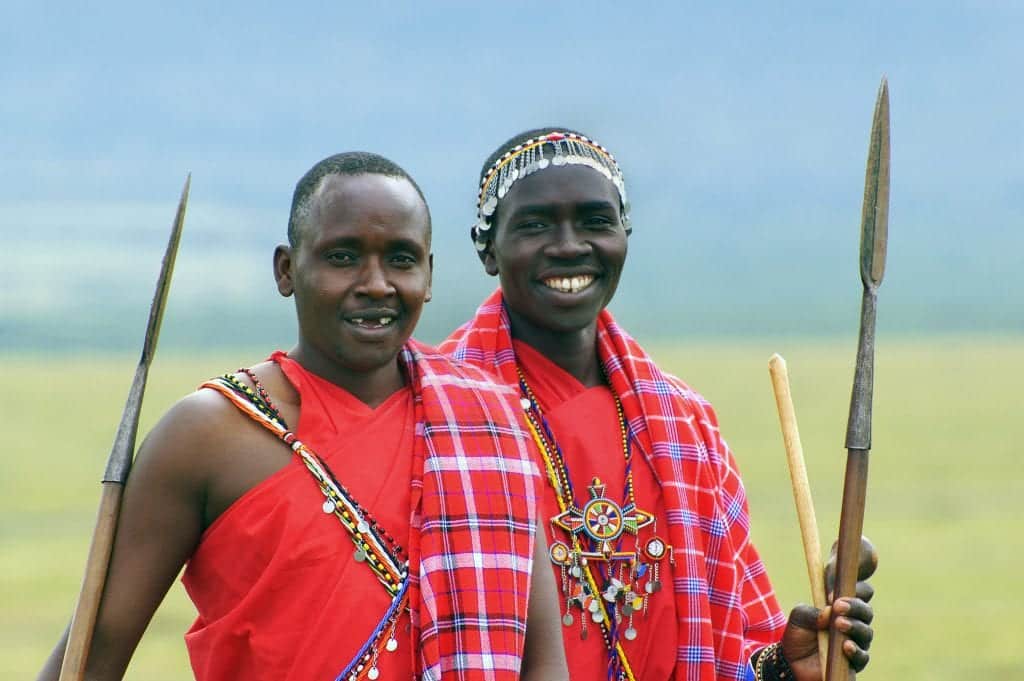Exclusive Tribes in Tanzania
The tribes in Tanzania mostly consist of Bantu ethnic groups, along with tiny Nilotic-speaking and non-African minorities. Tanzania does not possess a distinct dominant ethnic majority; the Sukuma, with around 16 percent of the nation’s total population, is the largest group, followed by the Nyamwezi and the Chagga.

Nonetheless, Tanzania has not encountered significant ethnic conflicts, owing to the unifying power of the Swahili language. which has evolved into a global language.
Tanzania is home to various ethnic groups, including the Makonde, Hehe, Kamba, Akiek, Kutu, Kisi, Zinza, Ware, Zyoda, Zigula, Zulu, Timbuka, Wanda, Dhaiso, Yao, Gweno, Mande, Alagwa, Corowa, Digo, Vinza, Nyaturu, Ngoni, Kimbu, Nindi, Kerewe, Ndonde, and Magoa, among others. Additionally, it is renowned for its rich cultural heritage and abundant wildlife, with notable sites such as Serengeti National Park, Mount Kilimanjaro, Tarangire National Park, Lake Manyara National Park, and Ngorongoro Crater, among others.
Tanzania is home to around 120 unique ethnic groups and tribes, excluding refugees residing in the country owing to conflicts in neighboring nations. They originate from the Bantu, with smaller Nilotic-speaking, indigenous, and non-African minority. Each tribe possesses its distinct language, traditions, and customs.
Tanzania appears to be the sole African nation whose tribes encompass all four of the continent’s principal ethnic groups: Bantu, Cushitic, Nilotic, and Khoisan. Most tribes in Tanzania engage in agricultural techniques, including hunting and gathering, and hence reside remote from urban areas. Tanzania, being a large nation, is a diverse destination where all tribes are linked by the commonly spoken national language, Kiswahili.
The following are the various ethnic groups present in Tanzania:
Sukuma
The Sukuma tribe, the largest Bantu ethnic group in Tanzania, resides in the northern region of the country, south of Lake Victoria. The spoken language has Niger-Congo origins and is predominantly associated with rural communities, but contemporary adherents primarily practice Christianity.
The tribe practices polygamy, with a man marrying multiple women, however it is largely a matriarchal society. Consequently, they are closely associated with Tanzania’s second largest tribe, the Nyamwezi.

Their major foods are millet and sweet potatoes, cultivated by farmers and supplemented by cow herding. The primary spoken languages are Sukuma and Swahili. The prevalent adage among the Sukuma tribe states, “the wind does not break a tree that bends.”
Chagga Tribe
The Chagga Bantu tribe is the wealthiest tribe in Tanzania, residing on the fertile southern slopes of Mount Kilimanjaro in northern Tanzania. The tribe is among the wealthiest and most organized in Tanzania. These agricultural methods facilitated a highly dense population. These tribes are well-known for their eagerness to labor. It is exceedingly uncommon to encounter them serving as guides in Kilimanjaro National Park.
They employ contemporary irrigation and agricultural techniques and are among the modernized tribes, which significantly enhances their reputation in various modern economic operations within the country.
The majority opted to relocate to urban areas in pursuit of business prospects. A significant percentage of Chagga engage in agriculture, primarily cultivating coffee and bananas.
Notably, there is a renowned local alcoholic beverage known as “Mbege,” which is produced from fermented bananas. Chagga culture lacks centralized villages. Each family resides on its own coffee and banana plantation, resulting in a significant work impact throughout the slopes of Mount Kilimanjaro.
Maasai Tribe
The Maasai tribe is a large ethnic group located in Kenya and northern Tanzania. This tribe’s distinctive cultural attire is of significant importance globally. The Maasai are a Nilotic ethnic group primarily residing in Northern Tanzania and parts of Kenya. The Maasai tribe comprises approximately 800,000 individuals, with a total exceeding one million in both Tanzania and Kenya.
The majority of the Maasai inhabit areas near safari hotspots in Tanzania, such as Serengeti National Park and the Ngorongoro Crater. The primary economic activities encompass livestock raising, specifically cattle husbandry, agriculture, and some individuals have transitioned to roles as guides within parks.

Some Maasai communities reside near kraals and fenced villages. They excel in greeting guests to their Kraals, entertaining them with traditional dances and songs, and are proficient in creating exquisite handcrafted jewelry, primarily produced by the women in their communities. They own a renowned tagline that asserts, “If you wish to progress swiftly, proceed alone,” and “If you aspire to travel far, collaborate.”
Hadzabe Tribe
This is a distinctive tribe in Tanzania that bears resemblance to the Bushmen of the Kalahari. The Hadzabe tribe has a modest population of approximately 1200-1300 individuals residing in rudimentary habitats such as caves near Lake Eyasi. They are nomadic individuals who like to inhabit the Yaeda Valley and the adjacent rocky scrub hills in northern Tanzania.
The men of this tribe excel in engaging with visitors, so increasing the likelihood of encountering them during hunting expeditions or daily cultural events. They possess a unique language that is entirely distinct from any tribal languages in Tanzania.
The primary economic activity conducted are hunting and gathering. The Hadzabe tribe is one of the African tribes that live in a manner akin to their forefathers.
Nyamwezi ethnic group
The Nyamwezi tribe is the second largest and a distinctive ethnic group in the nation. The term Nyamwezi is derived from the local language, signifying “People of the Moon” or “People of the West.” The Nyamwezi are indigenous to central Africa.
Zaramo Tribe
The Zaramo is one of the numerous tribes located in Tanzania. They mostly reside in Dar es Salaam and the Pwani region. It is a large tribe that predominantly practices Islam, with the exception of a few individuals who adhere to other religions. The predominant spoken language is Swahili, which originates from Arabic.
They opted for the Swahili-Arab culture regarding attire and customs. They are passionate in agriculture, aquaculture, and animal husbandry. The Zaramo excel in the cultivation of staple foods such as rice, millet, and sorghum, as well as cash crops such coconuts and peas.
Dar es Salaam is being modernized, with a significant number of small company owners in the city core.
Tanzania is home to two religions: Islam and Christianity. Tanzania is a remarkably beautiful country, renowned for its culture, natural resources, and wildlife safaris that attract global attention. The country is remarkable for its diversity, comprising over 120 ethnic groups that vary in language and religion. To simplify matters, commence your safari planning immediately to maximize your enjoyment of Tanzania Safaris. Engage a reliable local tour operator; if you are confident, you may book with Gorilla Trekking in Africa by emailing or contacting us for further information or to secure your reservations.
